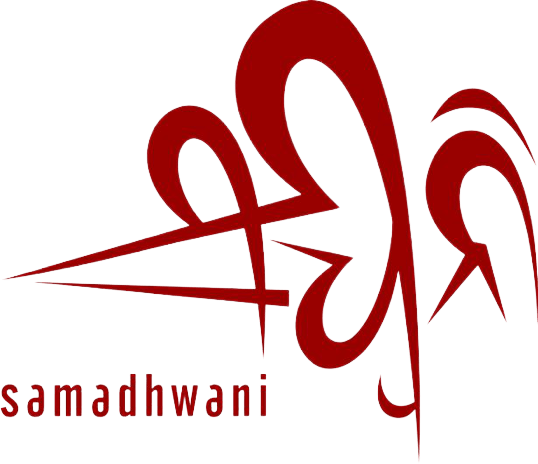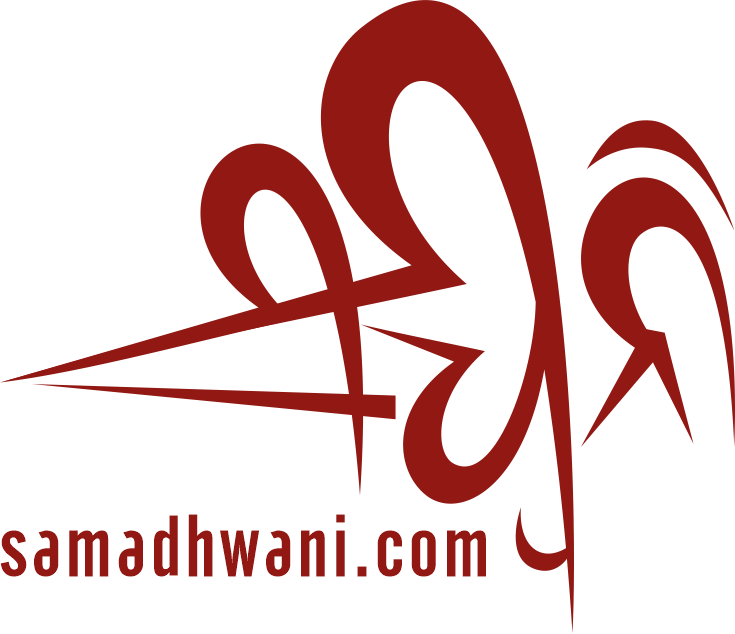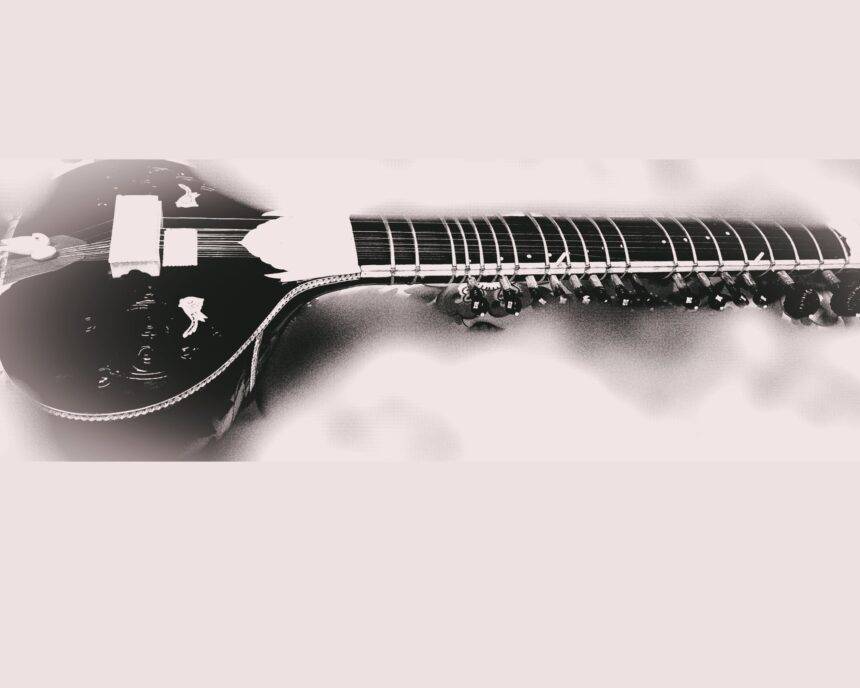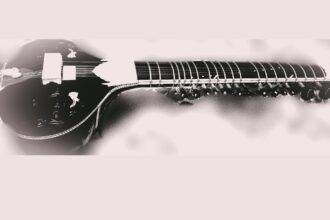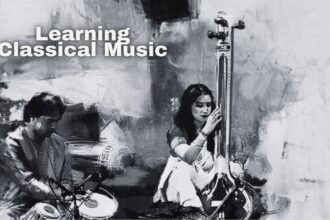In my recent writings, I’ve been exploring this expansive canvas, discussing the fundamental concepts and sharing personal experiences within this musical universe. Yet, amidst these discussions, it struck me that a significant component—the sitar—had not been given its due spotlight. Let me clarify, even though the question might not have been explicitly raised: when we immerse ourselves in the world of Indian classical music, especially the dimension of melody, we find ourselves in the enchanting realm of the Raga. It’s not just a musical element; it’s the very essence that defines the soul of this tradition. The Raga becomes a muse for musicians, a guide for their expressions, and a source of endless inspiration.
In this musical cosmos, narratives unfold, and stories are told through the prism of the Raga. Each Raga has its unique personality, a distinctive set of notes, and a mood that it invokes. Musicians don’t merely perform a Raga; they embark on a journey, creating an immersive experience for themselves and their audience.The sitar, as an instrument, becomes the vessel through which these musical stories are told. Its strings resonate with the emotions encapsulated in the Raga, and its melodic expressions become the brushstrokes that paint the sonic canvas. The sitarist, like a storyteller, weaves a tale using the Raga as the central theme, exploring its nuances, and bringing it to life through intricate improvisations. So, when we talk about Indian classical music, we are essentially delving into a world where the Raga is not just a musical scale; it’s a living, breathing entity. It’s the anchor around which the entire musical experience revolves—the heartbeat of a tradition that has transcended generations. Through the lens of the Raga, musicians find a medium to connect with something larger than themselves, tapping into the rich tapestry of emotions and expressions that have been woven into the fabric of Indian classical music for centuries.
In this instance, while the primary focus isn’t directly on the sitar itself, I’m compelled to share insights from the maestro of the Sitar, Ustad Vilayat Khan, often referred to as the “Aftab-e-Sitar” or the Sun of the Sitar. His profound words, as beautifully captured in Deepak Raja’s masterpiece “Raga-ness of Ragas,” draw me into the world of musical wisdom. Let me take a moment to express my admiration for Deepak Raja, a luminary in the realm of music writing. His finesse in navigating the intricate nuances of Indian classical music is unparalleled. Every piece he pens stands as a testament to his deep understanding and appreciation for Hindustani Classical music.
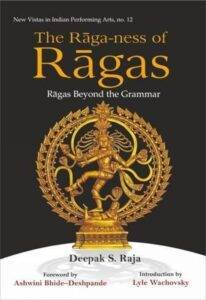
In the pages of “Raga-ness of Ragas,” Ustad Vilayat Khan’s words come alive, offering a glimpse into the maestro’s thoughts on the essence of ragas. Raja’s skillful narration adds a layer of richness, creating a bridge between the profound insights of a legendary artist and the avid reader eager to delve into the heart of Hindustani Classical music. It’s a testament to Raja’s literary prowess that he can capture and convey the depth and subtleties of Ustad Vilayat Khan’s reflections. Through such literary endeavors, the spirit of Indian classical music is not only preserved but also shared, allowing enthusiasts like me to embark on a journey of musical discovery guided by the wisdom of maestros. Raja’s books, like beacons, illuminate the path for those navigating the intricate landscape of ragas and melodies, making them invaluable treasures for anyone seeking to understand and embrace the soul-stirring world of Hindustani Classical music.
Returning to the segment of the book that unfolds Ustad Vilayat Khan’s insights on navigating the intricacies of a raga during a performance, he eloquently emphasizes the importance of handling a raga with precision, incorporating elements such as rit, riwaz, rasm, rasa, and rang. These concepts, as elucidated by the maestro, delve into the very essence of musical expression and are bound to resonate deeply with any reader possessing a sensitive and creative mind. Attempting to distill and further paraphrase the explanations presented by Ustadji, one finds a wealth of nuanced guidance that touches the core of musical understanding and interpretation.Let’s delve into Ustad Vilayat Khan’s breakdown of key elements in handling a raga during a performance –
According to him, rit represents the fundamental rules universally accepted by all. Disregarding these rules renders the raga incomprehensible, leading to the rejection of your performance. Moving on to riwaj, Ustadji refers to conventions that, while not strictly “legal,” are widely accepted within the musical community. These are somewhat flexible norms that contribute to the overall accepted framework of musical expression. Then comes rasm, described as a ritual or a minority practice, sometimes even verging on eccentricity, that imparts a distinct and memorable quality to your rendition. Interestingly, rasm can undergo a transformation. If a particular fringe element or eccentricity gains popularity and is adopted by a significant number of musicians, it transitions into riwaj, potentially losing its initially distinctive and memorable character. Conversely, a riwaj, if widely embraced and becomes a universal practice, transforms into rit. This evolution is significant, as it attains the status of a legal and documented aspect of the raga, acknowledged by scholars and integrated into the established rules of performance.
Now, the rasa, its significance lies in offering a spectrum of meanings, providing the artist with choices to evoke specific responses from the audience. A clear understanding of the desired emotional response becomes a valuable guide in crafting a compelling musical narrative. As for the final element, rang, it eludes precise definition. It operates beyond the performer’s control and surpasses any verbal expression about music. It resides in that mystical realm where, if the divine favor is bestowed upon the artist, the music transcends. On such occasions, the audience becomes immersed in the vivid hues, the color (rang), of the musical experience, a phenomenon that is beyond the artist’s conscious manipulation.
The universe of raga is a profound, exquisite, and kaleidoscopic realm. It holds diverse meanings, each interpretation as unique as the individual experiencing it, thereby expanding the already vast spectrum of significance and interpretation. Imagine this world as a deep, endless ocean where every note and melody carries layers of emotion and nuance. To each listener, the raga unveils a personal narrative, resonating with their own emotions, memories, and cultural context. This diversity of interpretation breathes life into the music, making it a dynamic and living art form. The world of raga is not just about musical notes; it’s a journey into the depths of human emotion and expression. It’s a canvas painted with the hues of individual perception, creating a mosaic that reflects the beauty and diversity of the human experience.
